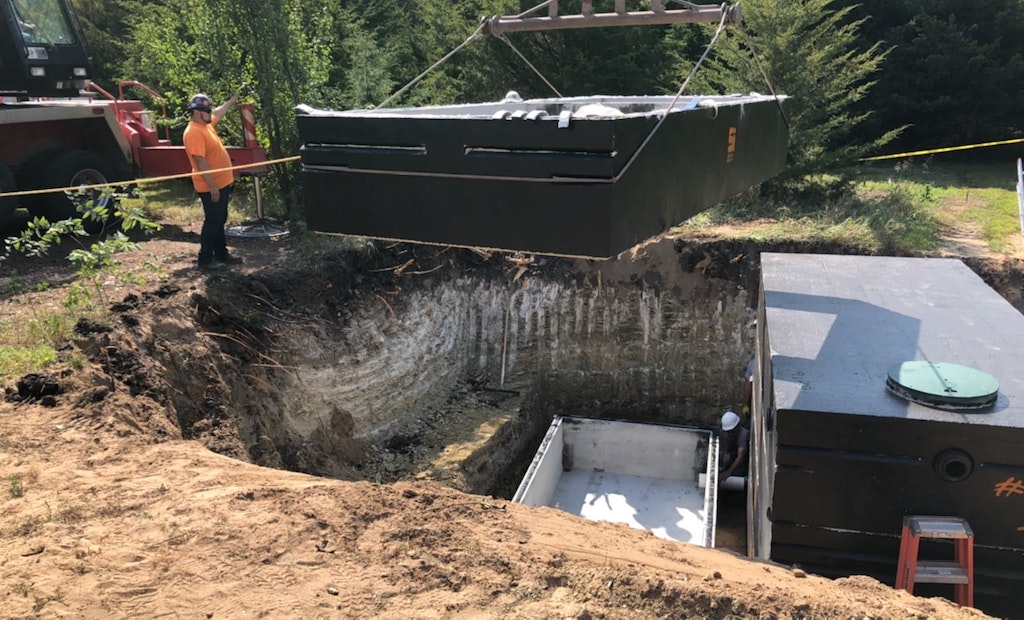
Installation of two flow equalization tanks. This photo shows the connection at the bottom. (Photos courtesy of SI Precast)
A flow equalization tank, also known as a surge tank, is a specialized dosing tank that provides storage of effluent and uses timed dosing to allow for uniform delivery to a subsequent component over a period of several days. In flow-equalization configurations, the dosing tank...





